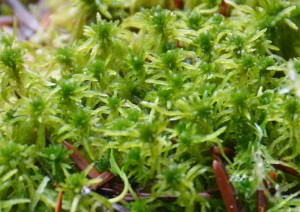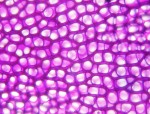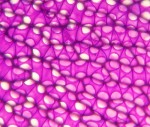General Description: Plants small and slender, capitulum small with conspicuous terminal bud; bright green to yellowish brown

| Habitat: Minerotrophic, common at the mineral soil margins of bogs and poor fens, medium open and forested fens |
 |
Stem Features:
| Stem: pale green to straw-colored; cortex thin (2-3 cells), each outer cortical cell with large round pore in distal end. |
Stem cortex: |
Stem cross-section: |
| Stem leaf: broad-spatulate and frillate, border slightly to moderately broadened at base (generally less than ¼ base width); hyaline cells rhomboidal, efibrillose and often 1-2-septate. |
Stem leaf:

|
Upper cells of stem leaf: |
Branch Leaves:
| Fascicle (dry): 2 divergent and 1-2 pendent branches. |
Branch leaves: ovate-lanceolate; hyaline cells on convex surface with numerous pores along the commissures grading from small pores near leaf apex to large pores at base, concave surface with large round pores at leaf apex and along margins. Inflated retort cells not necked |
Branch leaf:
 |
Branch leaf, outer surface:
 |
Branch leaf, inner surface:
 |
|
| Leaf cross-section: |
Branch cortex: |
Branch cross-section: |
Sexual Condition: monoicous, sporophytes common, sporangia mature late spring and early summer.
Comments: Easily recognizable species due to its small size, pale green color, distinct terminal bud and fimbriate stem leaves (S. lindberghii has similar stem leaf, but overall morphologically very different).
Additional Photos:






